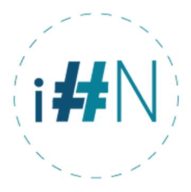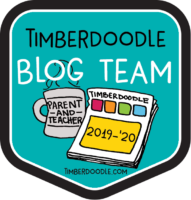Picking out which curriculum to use with your kids can be overwhelming and exhausting. Especially if you have made the decision not to go with an entire grade-level package.
In this post, I will share my process for selecting the materials and curriculum my kids will use each year.
- I shop my house.
- I shop my computer files.
- I shop used curriculum.
- I read the catalogs and sales emails.
- I buy what we need most this year.
Before I Start Shopping
The first step of my process is somewhat unseen. Each spring I begin to take mental note of each child’s strengths and weaknesses. I pay special attention to what things are coming easy and where they are struggling. I always observe my kids but during the spring I take a step back and observe with the intent of contemplating what changes to their academic work need to be made for next year.
Sometimes these changes can result in fundamentally different choices of materials or curriculum for the year. Before we can know what is best for our child, first we must know our child.
In addition to my own observations and contemplations, I have my kids write a list of things they would like to learn next year. I work their list of interests into the overall plan for the year. If they have an interest in a certain science or history topic I will make sure they get to study that topic. I don’t leave anything off just because they don’t write it on their list. The list is not my guide for what they need for the year. Kids need a lot of things and are only aware of a small portion of what there is to learn in this world. I nourish their love of learning in two ways. First, I include the things they already know they want to learn about. Second, I introduce them to things they don’t know to be curious about yet.
With my list of skills and content they need to work on, and their list of interests, I am ready to start browsing.
First I Browse My House
Even when my kids were little and I didn’t already have a ton of books and homeschool curriculum sitting on the shelves I still found we had a lot of things that could be used as part of our homeschool day.
For example, we already had a lot of books we could read aloud. Did we really need to buy a package of literature when we already had good books at home? Did I already have enough books on our shelves to read-aloud that year?
Now that I have been in the game of homeschooling for over 10 years I have even more stuff to choose from on my shelves here at home. I find it good to always remind myself first of what I already have. This involves actually looking through my bookshelves, science kits, games, and puzzles.
Honestly, I don’t make any fancy lists, I just look as a reminder and tuck in little mental notes reminding myself what subjects and skill levels I don’t have to shop for outside of my home this year.
Remember What Is Not On The Shelves
Okay, I am not as good about this as I should be. I do tend to remember some of the things I have purchased digitally but I am realizing I really should have those files organized more clearly and I should be reading through each spring just like I look at my shelves.
So this is more of a confession of something I don’t do but is obviously a good idea.
Instead, I just think about what I have on the computer, which means I am probably forgetting a lot of stuff, but I am remembering our favorites.
Used Curriculum
Almost every year I have been able to find some kind of used homeschool curriculum book fair or sale. I know what I want because of the time I spend reading homeschool curriculum catalogs. This means I recognize the good literature, the math I was thinking about trying, the new price of that science kit, etc.
A lot of the things I have are based on the fact that I found them used. This is a great way to find out if you like a publisher without breaking the bank. If I find something I love, when I need the next book, I will then pay full-price because I know it is good and we will actually use it.
Buying used curriculum can also help me avoid making decisions. Let’s say I am torn between 3 math programs, I show up at the used fair, and one of those programs is available for a fraction of the original price. Well, there is my answer. For now. If I end up hating it, at least I am out a lot less money and I can move on to one of my other options without so much guilt. I have found some of my favorite things this way.
Reading Homeschool Catalogs
I read homeschool catalogs and sales emails year-round. Sometimes I can get a great deal on something I know I want in the off-season. I read them so I am informed about what is out there and what my various choices are. I read them because I am weird. When I first started homeschooling I studied the catalogs in depth. Even reading the entire phone-book sized behemoth that Rainbow Resource sent me in the mail. I would get up before my kids and have my coffee while I read that catalog. So refreshing. Not joking.
I know not everyone shares my joy of curriculum catalog reading. I am sure there are more direct and efficient methods of choosing curriculum. But for me, this is an essential part of the brain-storming process.
I Buy What We Need Most This Year
Every year what we need most is different. It also changes once I have hit that used curriculum sale, so I don’t do major purchasing of new materials until after then. I buy new when we don’t already have something that works, we are moving on to a higher level, or a child has a particular interest in something we don’t have a good resource for yet.
At this point, I always make notes. This is the fancy planner I use.
I write typically write down each child’s name, followed by each subject they will study for the year. Then I add a note about what they will use to study the subject. If it is not something I already have then I add in the price.
I add up all prices and make compromises as needed if not everything we want fits in the budget that year. With so many free resources available these days you can usually find a way to stay on budget.
This list then gets saved and used later when I am planning out the weekly and/or daily schedules for our homeschool that year. If you are new to homeschooling you might want to plan that schedule out before you buy anything, the process might reveal you have put more on your list than will fit into a day. You can then simply decide what to save for another year. (Stay Tuned for How I Schedule it All Out.)
Making Sure I Have Everything Covered
I always think about what I will be using to develop their skills in math, reading, and writing.
Then I decide what to do for history and science. This might be based off things they put on their list of interest or it might just be areas I know they don’t know much about yet. Or, I may just make them pick a history or science book to read each week, especially if increasing their reading skill level is important that year.
Reading catalogs helps me keep in mind all there is that we could study. But I don’t try to study it all in one year. Also, maybe after that used curriculum sale I come home and realize I have more materials than we can possibly use at the same time.
It’s okay to put some things aside for next semester or next year. You don’t have to do all the things at once. Even though kids grow up fast, you have more time to get to everything than you think.
You may still be wondering how I decide if a product even makes my list. After all, there are a lot of math options, how do I narrow it down to 2 or 3, or make that final decision? Stay tuned for an upcoming post titled “How to Judge Homeschool Curriculum” to find out.



2 Responses
[…] My Mad Methods for Picking Curriculum […]
[…] My Mad Methods for Picking Curriculum […]